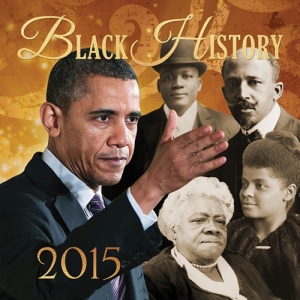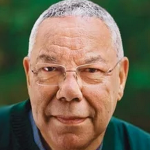McSTREAMY.COM (02/25/2015) – The Black population of the United States of America is projected to constitute 18 percent of the total population by the year 2060. That’s one of the figures released by the U.S. Census Bureau today, during Black History Month.
American historian Carter G. Woodson established Black History Week back in the 1920s to commemorate and celebrate the contributions to the nation made by people of African descent . The first celebration occurred on Feb. 12, 1926.
For many years, the second week of February was set aside for this celebration to coincide with the birthdays of abolitionist/editor Frederick Douglass and Abraham Lincoln.
In 1976, as part of the nation’s bicentennial, the week was expanded into Black History Month. Each year, U.S. presidents proclaim February as National African-American History Month.
 The history of blacks in the United States is varied, with ups and downs, some of which are shared with the rest of the residents of the country, while others are strictly unique to the culture. The black population has grown by leaps and bounds over the centuries, just as other ethnic groups have. Black Americans in the U.S., all have achieved much in their contributions to society, as have other individuals. However, February is Black History Month, so the focus is on Black America and there are some interesting details about the upward trends within that segment of the population.
The history of blacks in the United States is varied, with ups and downs, some of which are shared with the rest of the residents of the country, while others are strictly unique to the culture. The black population has grown by leaps and bounds over the centuries, just as other ethnic groups have. Black Americans in the U.S., all have achieved much in their contributions to society, as have other individuals. However, February is Black History Month, so the focus is on Black America and there are some interesting details about the upward trends within that segment of the population.
For example, figures released by the United States Census Bureau show, on July 1, 2013, there were 45 million blacks, either alone or in combination with one or more other races. Estimates indicate, by 2060 the projected black (either alone or in combination) population of the United States (including those of more than one race) for July 1, 2060 will be 74.5 million. On that date, according to the projection, blacks would constitute 17.9 percent of the nation’s total population.

President Barack Obama, the first black United States President, in 2008, joined the ranks of other Black Americans who have contributed to society.
Other interesting facts about the segment of people the U.S. Census Department refers to as black:
– As of 2013, there were 2.2 million black military veterans in the United States.
– Nearly 84 percent of blacks 25 and over had a high school diploma or higher in 2013. 19.3% of those 25 and over had a bachelor’s degree or higher. 1.7 million of those 25 and over had an advanced degree. 3.0 million were enrolled in undergraduate college compared with 2.6 million in 2008.
– 17.8 million blacks voted in the 2012 presidential election. Breaking that down a bit, 66.2% of blacks voted in the 2012 presidential election. That is higher than the 64.1 percent of non-Hispanic whites who did so. This marks the first time that blacks have voted at a higher rate than whites since the Census Bureau started publishing statistics on voting by the eligible citizen population in 1996.
– The annual median income of black households in 2013 was $34,598 , compared with the nation at $51,939.
– Figures from 2013 indicate 27.2% of the black population in the United States were living in poverty, compared to a national percentage of 14.5 percent.
– 84.1% of blacks were covered by health insurance during all or part of 2013. Nationally, 86.6 percent of all races were covered by health insurance.
– Among households with a black householder, the percentage that contained a family in 2013 was 61.8%. Translating that into numbers, there were 9.8 million black family households.
– Among families with black householders, 45.7 percent were households with married couples in 2013.
– 28.1 percent of civilian employed blacks 16 and over worked in management, business, science and arts occupations, while 36.3 percent of the total civilian employed population worked in these occupations.
It would seem Black Americans have come a long way from the very early days, when, as a group, they became part of the United States landscape. The projections indicate the growth in numbers, percent of the population, education, income, and their, collective, contributions to society and the economy of the nation, will continue upward for some time to come, and, rightly so.
COMMENTS WELCOME: As is the case with any article at McStreamy.com, you may comment at Your Views. We’re always happy to hear from you. If you’re not already a registered member, please follow the registration directions listed on the Your Views page. After you register, enter comments, or reply to anything anyone else enters. Only Registered McStreamy Users can enter comments, so be sure to sign in using the Log In link in our Main Menu at the top of any page. – McSTREAMY.COM

























